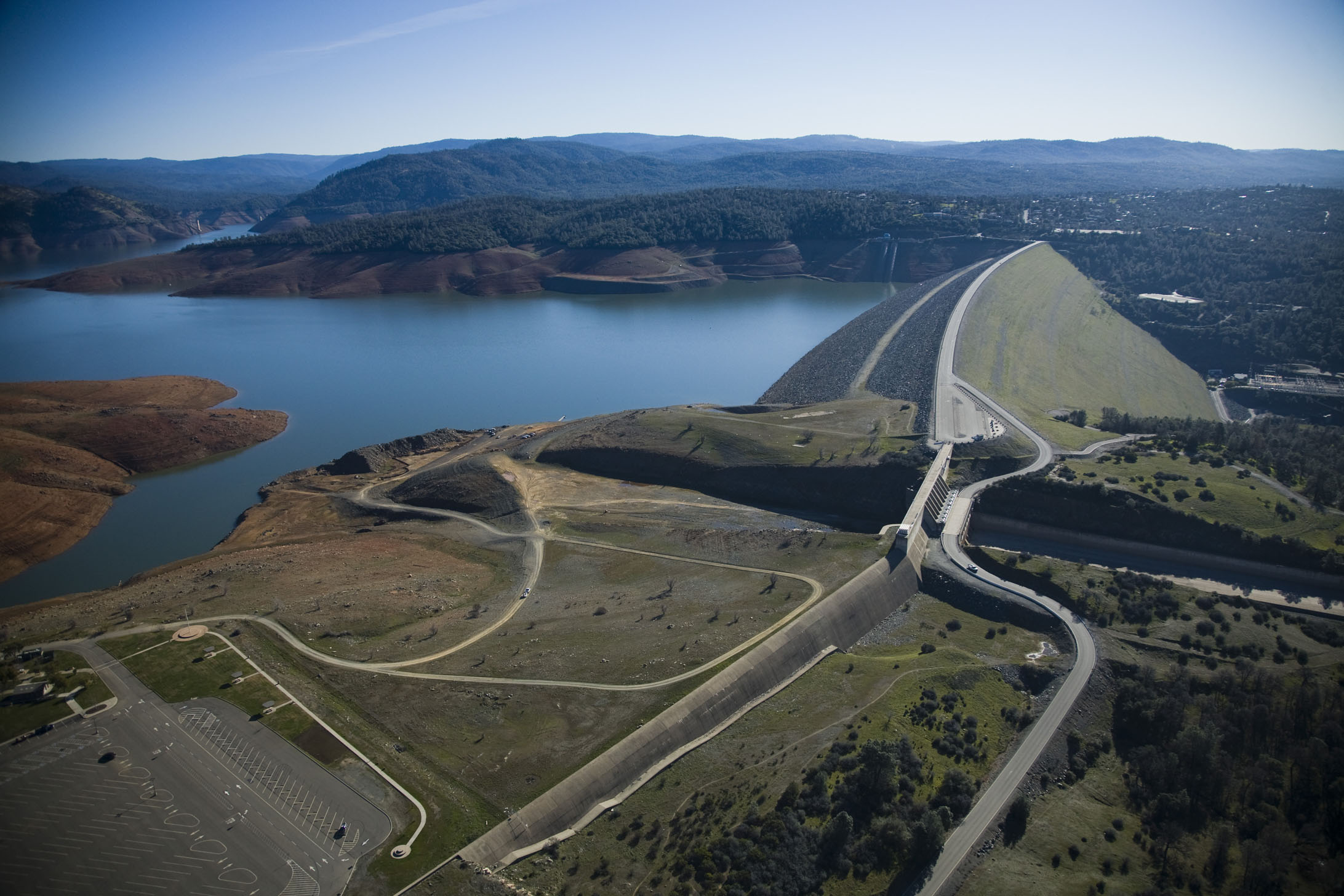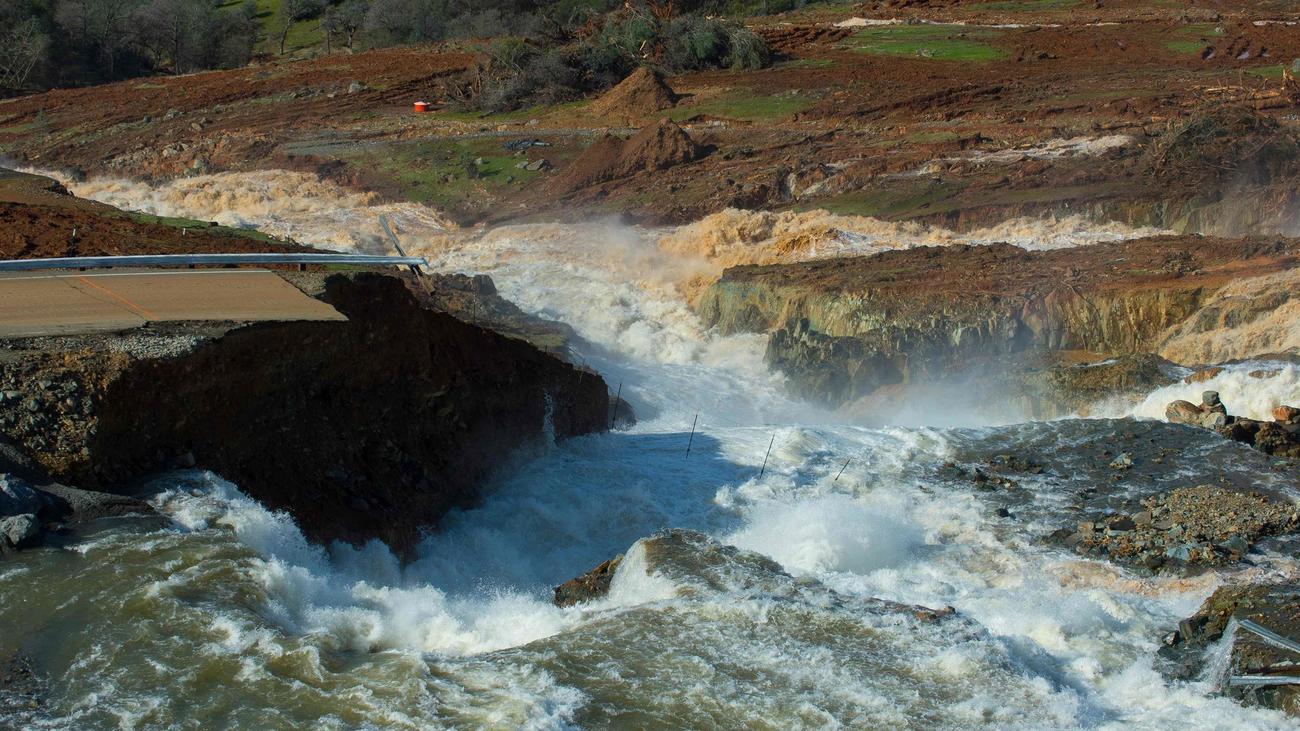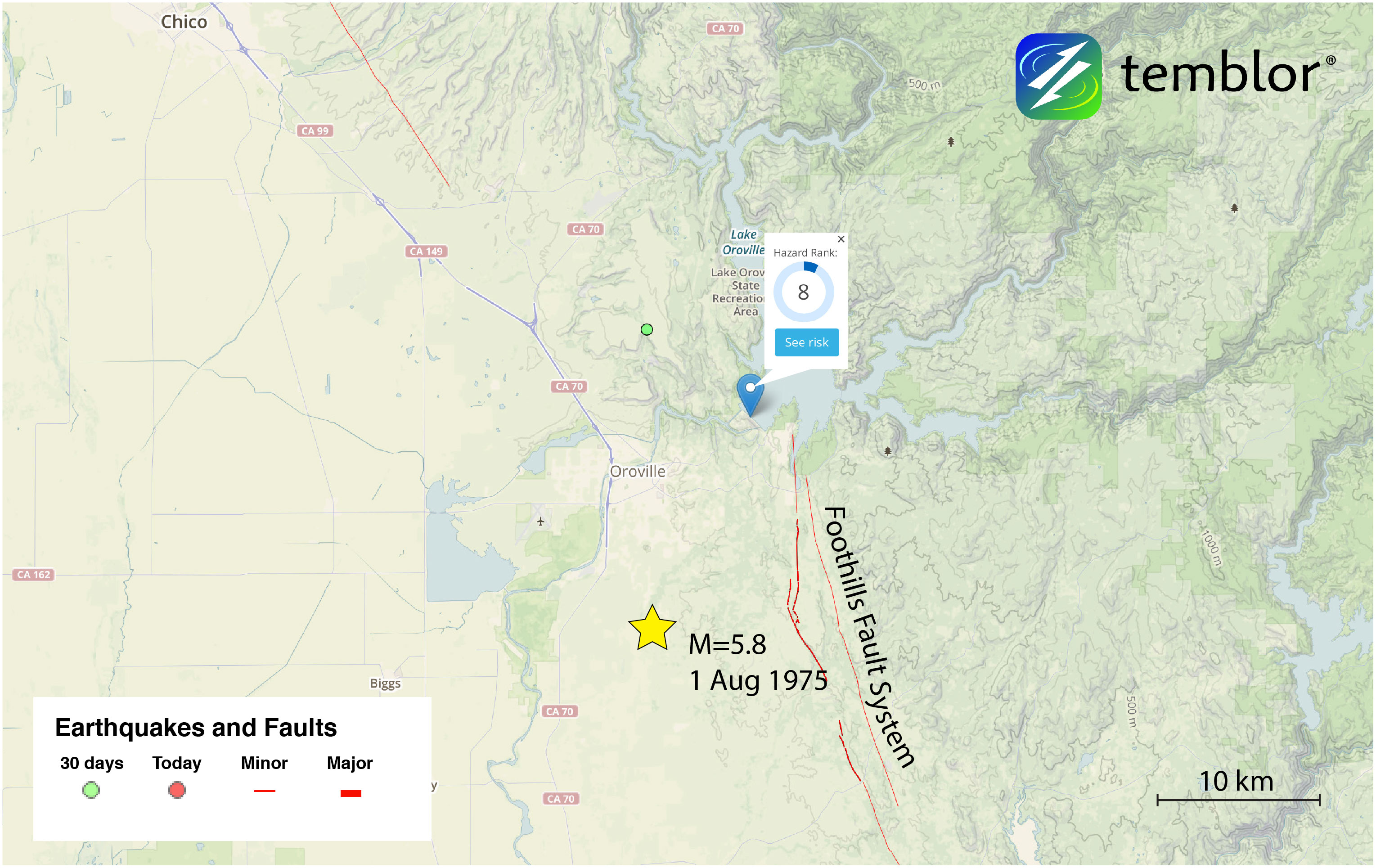-
Oroville Dam is also at seismic risk
By David Jacobson and Ross Stein, Temblor

The Oroville Dam in Northern California has garnered headlines recently due to its potential spillway failure. In recent weeks, heavy rainfall has raised the water level in Lake Oroville to the point where the emergency spillway was used for the first time since the dam opened in 1968. This was in part due to rising lake levels, and also to a football field-sized hole in the main spillway caused by erosion. But shortly after water started flowing over the emergency spillway, there was a major problem: The emergency spillway also began eroding to the point where officials became wary of the potential for catastrophic failure, leading to the evacuation of up to 200,000 residents downstream.

But that's not Oroville's only problem: It is also associated with one of the largest "induced" (induced or promoted by actions of man) earthquakes ever recorded in the U.S.: A M=5.8 event in 1975 (According to the USGS). While this may sound like a foreign concept, the filling of some reservoirs has been shown to be associated with a significant increase in seismicity. Most frequently, this increase occurs within several months of a reservoir's filling. However, at Lake Oroville, it occurred seven years after the dam's completion (Lahr et al., 1976).

On August 1, 1975, a M=5.8 earthquake struck 8 km (5 mi) southeast of the town of Oroville (the USGS lists two events, a M=5.7 and M=5.8 within 8 seconds of one another. We assume this is actually a single event with two possible magnitudes, locations and depths). From July 1974 to January 1975, the Lake's water level was lowered by approximately 40 m (130 ft), and then quickly raised again (Lahr et al., 1976). Such rapid fluctuations in water level are believed to have triggered the second largest induced earthquake ever recorded.
While the exact reasons for this type of induced earthquake is uncertain, scientists often attribute them to pore pressure variability. When a dam is filled, water slowly diffuses into the bedrock, finding its way into faults and fractures, where it jacks up the pore pressure. This increase makes faults more slippery, reducing the friction that otherwise keeps faults locked, and so makes faults more susceptible to failure. Today, a concept that was foreign and rare in 1975 is now, sadly, commonplace: Wastewater injection into deep wells in Oklahoma is doing exactly the same thing, and the largest so far about the same size as at Oroville: The 3 September 2016 M=5.8 Pawnee, Oklahoma, quake. Because of the fault geometry at Oroville, calculations by Bell and Nur (1978) suggest that the weight of the water actually clamps the fault, inhibiting failure. But the slow diffusion of the water into the fault zone, which takes years to build up, ends up promoting quakes. This could be another reason for the quake delay. The rapid draining and subsequent filling of Lake Oroville from July 1974 to January 1975 could also have caused crustal weakening from the built up pore pressure.
An interesting question is whether after 5 years of drought, the large and rapid refilling of the Lake this winter—from 1/3 full to brim full—could set the stage for future induced earthquakes at the Lake. What this means is that both the spillway integrity and seismic resilience point to the same need for safety, strength, and vigilance.
Sources
USGS Release: Scientists Find Source of Oroville Earthquakes (Prepared: August 12, 1975)
Bell, M. L., and A. Nur (1978), Strength changes due to reservoir-induced pore pressure and stresses and application to Lake Oroville, J. Geophys. Res., 83(B9), 4469–4483, doi:10.1029/JB083iB09p04469
K.M. Lahr, J.C. Lahr, A.G. Lindh, C.G. Bufe, and F.W. Lester, The August 1975 Oroville Eearthquakes, Bulletin of the Seismological Society of America. Vol. 66, No. 4, pp. 1085-1099. August 1976
ABC
LA Times
NY Times
NBC
CNN
http://temblor.net/earthquake-insights/oroville-dam-is-also-at-seismic-risk-2538/?utm
__._,_.___
No comments:
Post a Comment